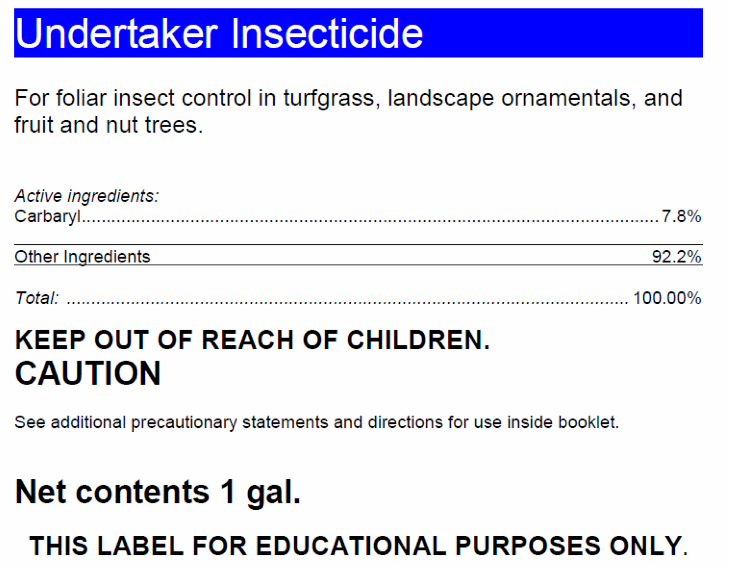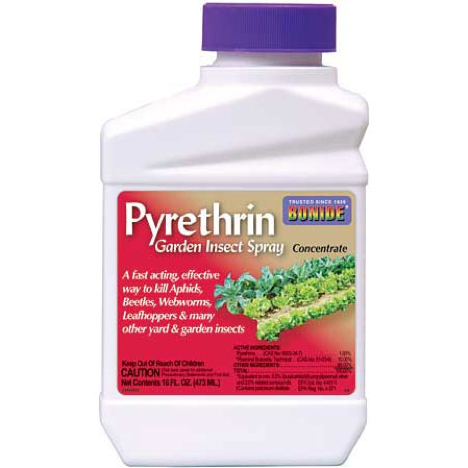Learn to Grow: Integrated Approaches for Managing Garden Pests, pt. 3
go.ncsu.edu/readext?721320
en Español / em Português
El inglés es el idioma de control de esta página. En la medida en que haya algún conflicto entre la traducción al inglés y la traducción, el inglés prevalece.
Al hacer clic en el enlace de traducción se activa un servicio de traducción gratuito para convertir la página al español. Al igual que con cualquier traducción por Internet, la conversión no es sensible al contexto y puede que no traduzca el texto en su significado original. NC State Extension no garantiza la exactitud del texto traducido. Por favor, tenga en cuenta que algunas aplicaciones y/o servicios pueden no funcionar como se espera cuando se traducen.
Português
Inglês é o idioma de controle desta página. Na medida que haja algum conflito entre o texto original em Inglês e a tradução, o Inglês prevalece.
Ao clicar no link de tradução, um serviço gratuito de tradução será ativado para converter a página para o Português. Como em qualquer tradução pela internet, a conversão não é sensivel ao contexto e pode não ocorrer a tradução para o significado orginal. O serviço de Extensão da Carolina do Norte (NC State Extension) não garante a exatidão do texto traduzido. Por favor, observe que algumas funções ou serviços podem não funcionar como esperado após a tradução.
English
English is the controlling language of this page. To the extent there is any conflict between the English text and the translation, English controls.
Clicking on the translation link activates a free translation service to convert the page to Spanish. As with any Internet translation, the conversion is not context-sensitive and may not translate the text to its original meaning. NC State Extension does not guarantee the accuracy of the translated text. Please note that some applications and/or services may not function as expected when translated.
Collapse ▲Over the past few weeks we have discussed the basic tenants of IPM and the cultural, mechanical, and biological tools you have available to help control garden pests. In this final part of the series, I will be discussing the use of chemical controls, with a focus on pesticide safety and organic and synthetic controls.
What are pesticides?
A pesticide in general terms, whether organic or synthetic, is any substance used for killing, repelling, or mitigating pests, which includes insects, weeds, and diseases. We may often refer to them by a more specific epithet:
- Herbicides kill unwanted plants
- Fungicides prevent most fungal plant diseases; these products cannot, however, be used to treat bacterial plant infections, nematodes, or viruses.
- Insecticides are used to control unwanted insect pests.

An example of the type of information you will find on an insecticide label. Always take time uninterrupted to read and understand the label.
Before I explain the difference between organic and synthetic pesticides, you must first understand what is on the label. By law, pesticides are required to have a label that gives you information about the product, including the active ingredients and relative toxicity to humans which are indicated by one of three words: caution, warning, or danger.
- Caution products are slightly toxic to humans,
- Warning products are moderately toxic, and
- Danger products have the highest toxicity to humans.
By their nature, all pesticides pose some risk to human health so always read the label and follow any precautions. I will admit that a pesticide label is not exactly the most thrilling read of your life, but it contains all of the pertinent information you need when you must apply pesticides. They will also contain information regarding personal protective equipment to be worn. At a minimum, you should always wear latex gloves, long-sleeved shirts, long pants, and close-toed shoes when applying pesticides. It is also recommended that you wash pesticide-contaminated clothing separately from other laundry.
Pesticide safety is important not only for the applicator, but also for family members who may have secondary contact with pesticides. Remember that the label is the law and should always be followed exactly as it appears on the product.
What are synthetic pesticides?
Synthetic pesticides are man-made products that may be derived from naturally-occurring substances. Synthetic pesticides often have a longer persistence in the environment, which is good for long-term pest control, but may have a higher chance of affecting people, wildlife, or beneficial insects. Synthetic pesticides may kill the target pest through direct contact or may be transported throughout a plant systemically. Systemic insecticides are water soluble and are distributed throughout a plant and have the longest environmental persistence in the landscape. The benefit of systemic pesticides is that you have longer-term control over seasonal or year-round pests and you reduce the frequency of pesticide applications. However, systemic insecticides have also been shown to negatively impact important beneficial insects, including honey bees and other pollinators.
What are organic pesticides?
Organic or “natural” products are derived from naturally-occurring materials like minerals, plants, or soaps and oils, and generally have lower environmental persistence than synthetic pesticides.
There is a common misconception that organic products are safer for humans than synthetic, but this is not always the case. Remember that a product is considered “organic” because of how quickly it breaks down, not for its toxicity to humans, wildlife, or beneficial insects. Rotenone, for example has low environmental persistence, but is moderately toxic to most mammals, and is extremely toxic to fish. Low environmental persistence may also mean that more applications are required. So, the tradeoff is that while you are applying something with low environmental persistence, you are applying it more frequently than if you were to apply a synthetic product. Whether synthetic or organic pesticides are used, you should apply in late afternoon and avoid applications just before and during flowering.

Pyrethrins are a class of chemical approved for use in organic gardening. However, it is also very harsh on desirable, beneficial insects.
An overall goal of an effective IPM program is to use pesticides sparingly and as a last resort so that you increase their efficacy for pest control and minimize non-target impacts. As gardeners, it is important to be more purposeful in the decisions we make in regards to how we manage pests and the overall effects our decisions have on the environment. Do your homework, choose the right plant for the right place, know the pests, plan ahead, and ask questions from a trusted resource when you are unsure of the answer.
Learn More!
To learn more about IPM, pesticides, or any other gardening information, visit the Haywood County website, where you can post your questions via the ‘Ask an Expert’ link or contact the N.C. Cooperative Extension of Haywood County office. For more information on home gardening in general, visit the Extension Gardener website.




